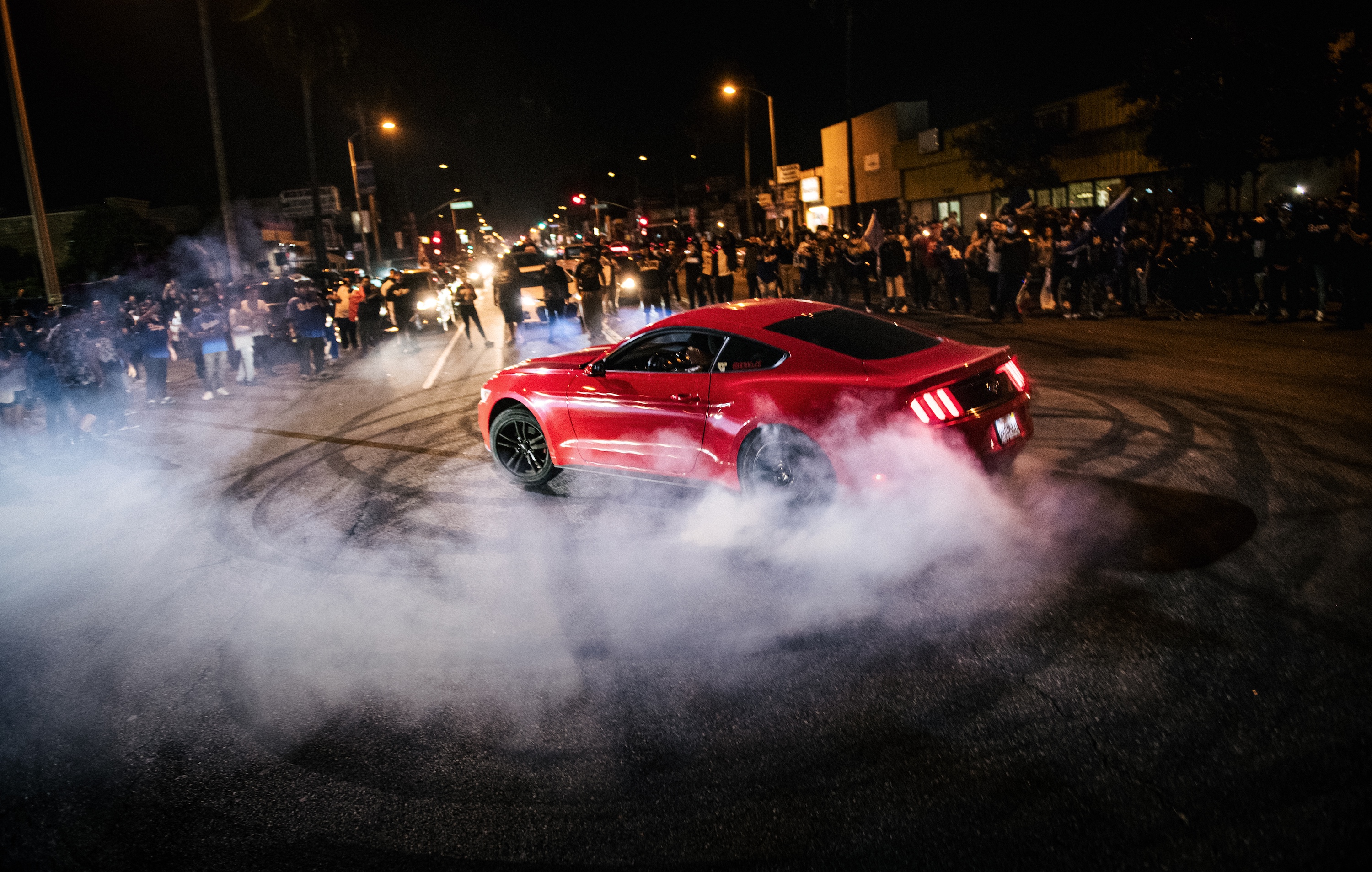LOS ANGELES—Two infernos, a vandalized storefront, drones spitting fireworks at drifting, souped-up muscle cars—relatively, it was a tame Labor Day weekend in Los Angeles County, where illegal street takeovers by racers seeking internet clout continue to terrorize neighborhoods.
Contemporary “takeovers”—in which drivers commandeer intersections and perform dangerous stunts for a scrum of onlookers—are a successor of sorts to California car cultures including drag racing, cruising, lowriding, and sideshows.










